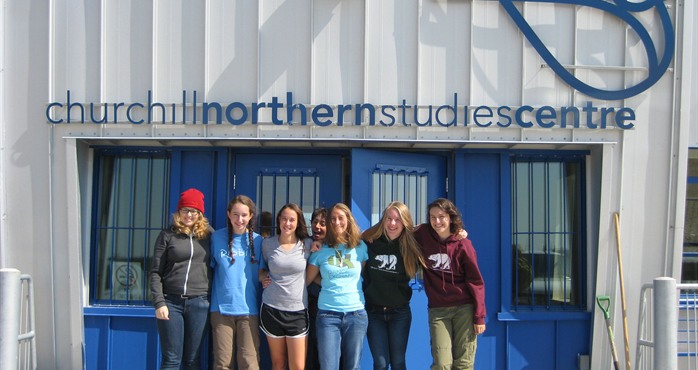Polar Bears and Permafrost
February 8, 2021
A number of Kelvin students, together with Chemistry teacher, Donna Labun, participated in a two week science trip to Churchill and Wapusk National Park. They joined Dr. Ryan Brooks from the University of Saskatchewan and Dr. Jim Roth from the University of Manitoba and a group of students from Baltimore, Maryland and Seattle, Washington for a student-led climate change field research trip in the greater Wapusk ecosystem. The first few days were spent at the Churchill Northern Studies Center. From there the group was transported by helicopter to a small research camp in Wapusk National Park. On the tundra, the students tested the depth of the active layer by probing down to the permafrost in both bog and fen environments. This depth was then linked to moisture content, soil pH and vegetation dynamics. The goal is to monitor this data over many years and contribute to the overall understanding of the changes that are taking place on the tundra in the subarctic.
The students also helped Dr. Jim Roth survey the arctic fox dens in the area. Many of the dens were occupied by little pups and students were able to watch the pups playing and tumbling with each other. The scientists shared about their research and the students learned about topics such as the creation of beach ridges through isostatic rebound, the effect of the decrease in bog areas on caribou survival in the arctic winter, how to monitor fox populations and the intricacies of food webs, and the effect of the increase in snow goose population on the tundra. Some of the highlights of the trip were: watching the northern lights, feeling the thud of the probe on the permafrost, eating cloudberries, snorkeling with beluga whales, and seeing caribou, polar bears, and arctic foxes.
Here are a few student quotes describing the science aspect of the trip:
· “This trip really changed the way that I view science. I think I now realize that the whole point of science is to better understand, protect, and wonder at the incredible world around us.”
· “One of the most memorable things in the whole trip was the first night we saw the northern lights. Green curtains of light hung in the sky, looking like the extremities of another world. The way they shimmered and slithered across the heavens, beckoning us, reaching down to us as they navigated the great span of sky overhead was truly one of the most enrapturing things I have ever seen.”
· “The trip made me realize that the more you learn and understand about a place—about anything, really—the more there is to love about it. This trip has inspired me to learn more about the environment in which I live and the ecosystems that surround me.”
Students also had the opportunity to meet with representatives from the region’s indigenous cultures. A particularly powerful event was listening to Caroline, a Sayisi Dene woman, describe the devastating relocation of her people to Churchill in 1956. It was inspiring to hear about the long and difficult path toward healing, both for her personally and for her people.
The trip was a life-changing learning experience which is summed up in the words of one of the students: “Not only do I feel that I have gained an incredible insight into science and Arctic ecology, I feel that I have also gained an insight into the cultures and political issues of the region, a greater appreciation for my surroundings, and friendships that will last forever.”
Listen for announcements to find out about next year’s trip or see Ms. Labun in room 18 for details.

























